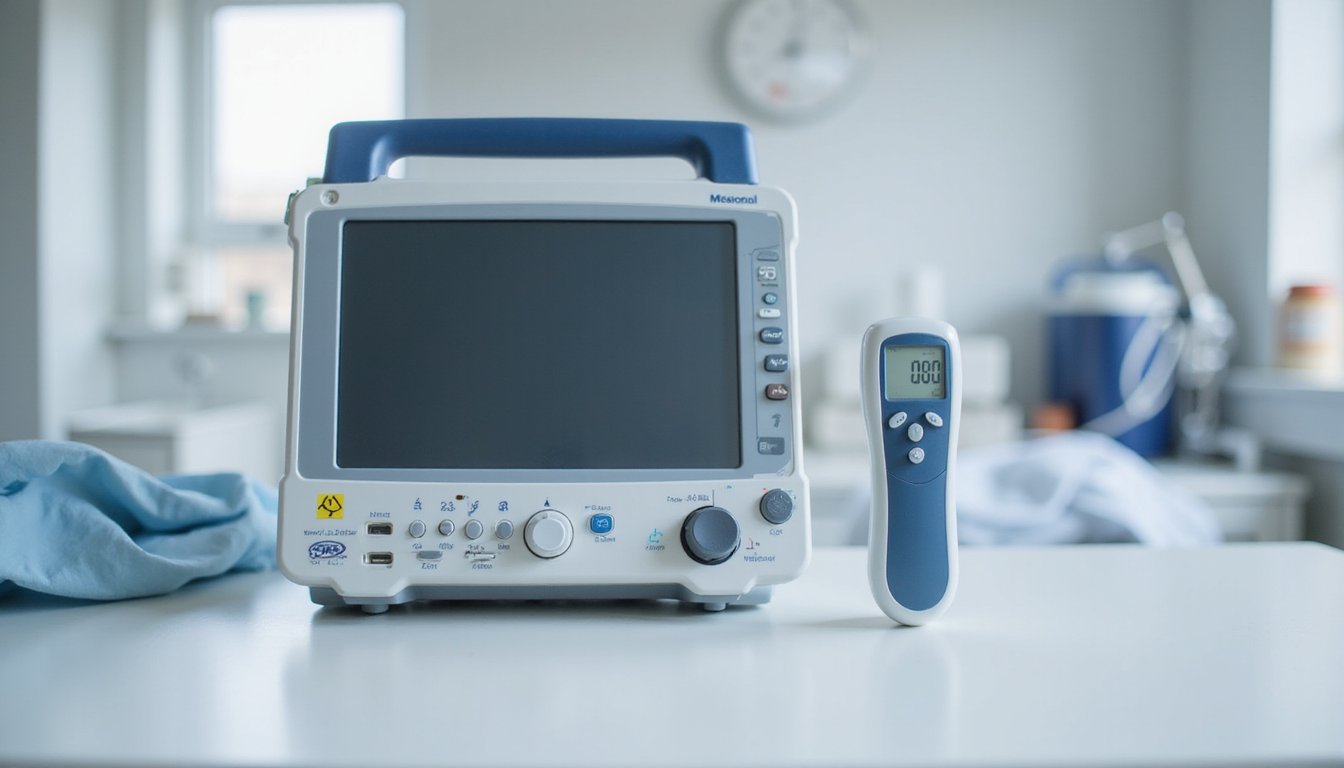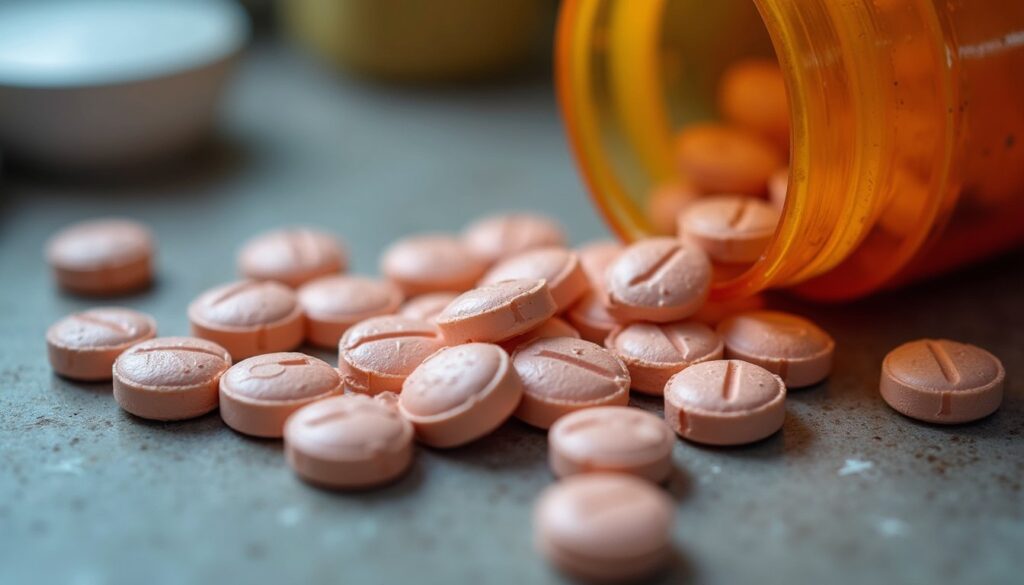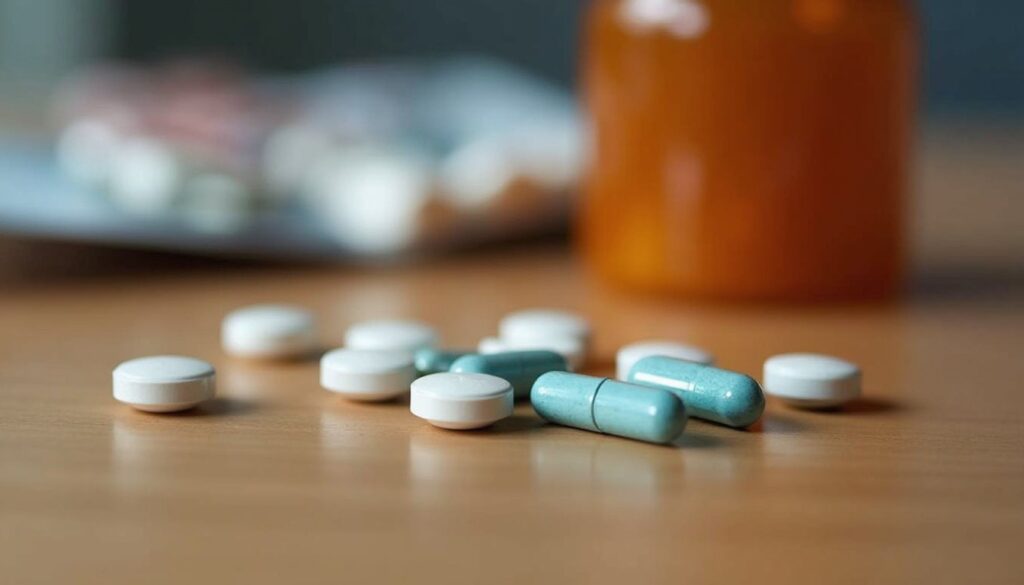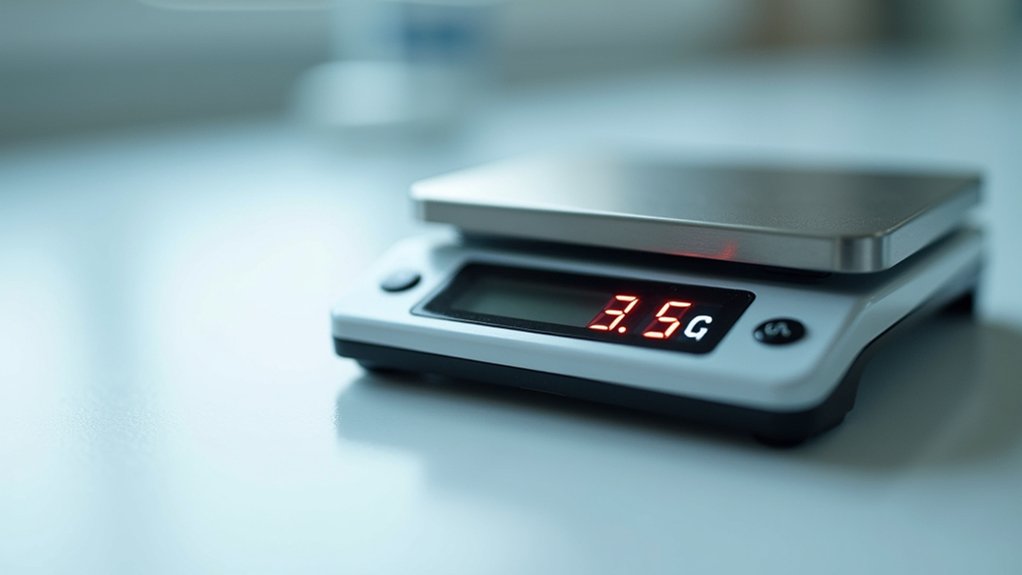If you suspect a hallucinogen overdose, immediately call 911 and move the person to a quiet, low-stimulus environment. Monitor their breathing and pulse continuously, and be prepared to perform CPR if necessary. Don’t induce vomiting or administer any substances. Provide emergency responders with details about the drug taken, dosage, timing, and any other substances used. Keep the person under constant supervision while removing dangerous objects from their reach. Understanding the specific symptoms, risk factors, and medical interventions can help you respond more effectively in these critical situations.
Recognizing the Signs and Symptoms of Hallucinogen Overdose

Recognizing a hallucinogen overdose requires immediate attention to distinct behavioral, physical, and psychological changes that signal dangerous intoxication levels. You’ll observe intense hallucinations, severe paranoia, and violent outbursts that exceed typical hallucinogen effects. Physical indicators include dilated pupils, profuse sweating, rapid heartbeat, and hypertension. Neurological disturbances manifest as muscle tremors, seizures, or dissociation from reality.
Watch for physiological complications like respiratory distress, hyperthermia, and cardiovascular irregularities; these demand emergency intervention. The person may exhibit extreme agitation, suicidal ideation, or self-harm behaviors. Persistent psychotic states, amnesia, and thought disorders indicate severe cognitive disruption. Since most hallucinogens are not included in standard urine drug screens, clinical observation of symptoms becomes especially critical for recognition.
Critical warning signs include seizures, respiratory arrest, cardiovascular collapse, or loss of consciousness. If you observe these symptoms, don’t wait, seek emergency medical assistance immediately, as a hallucinogen overdose can rapidly become life-threatening.
Understanding Risk Factors and Substance-Specific Dangers
Understanding which hallucinogens pose the greatest danger and identifying personal vulnerabilities can prevent fatal overdoses. PCP carries augmented risk of neurotoxicity and seizures, while NBOMe compounds can trigger cardiac arrest even at moderate doses. LSD rarely causes physiological overdose but provokes severe psychological reactions. Psilocybin mushrooms may induce dangerous behaviors and panic.
Your overdose risk increases dramatically through polysubstance use; combining hallucinogens with depressants or stimulants creates unpredictable substance interactions and raises fatality risk fourfold. High-dose consumption, injection methods, and novel synthetic compounds amplify neurological effects and toxicity. Pre-existing psychiatric conditions, multiple substance use disorders, and using alone compound your vulnerability. Young adults, those experiencing homelessness, and individuals lacking treatment engagement face heightened risk. Drug overdose deaths have risen consistently over the past two decades, highlighting the critical importance of understanding these risk factors. These drugs can produce strong emotions ranging from bliss to fear, which may impair judgment during critical moments. Recognizing these factors allows you to implement targeted harm reduction strategies. If you experience unusual symptoms or reactions, contact the site administrator immediately with details of the action that triggered your concern, as prompt communication can facilitate faster resolution and appropriate medical guidance.
Immediate Actions to Take When Overdose Is Suspected

When you suspect a hallucinogen overdose, your initial priority is ensuring immediate safety for both the affected person and everyone nearby. Move the individual to a quiet, low-stimulus environment and remove access to dangerous objects. Check for life-threatening symptoms: agitation, seizures, hallucinations, or unconsciousness. Monitor breathing and pulse continuously; initiate CPR if either stops.
Use safe communication techniques, speak calmly, and avoid sudden movements if the person displays paranoia or aggression. Don’t induce vomiting, administer substances, or apply physical restraint unless absolutely necessary to prevent harm. Collect any drug containers or paraphernalia for medical teams. Reassure the casualty and try to keep them calm, especially if they are anxious or experiencing distressing hallucinations.
The importance of supervision cannot be overstated: never leave the person unattended. Their condition can deteriorate rapidly, requiring immediate intervention until emergency responders arrive. Call triple zero (000) immediately if the person is unable to respond or shows signs of a serious overdose. When speaking with the emergency phone operator, provide the location, details of the situation, and information about the person’s consciousness and breathing status while they provide guidance as you wait for emergency services to arrive.
Calling Emergency Services: What Information to Provide
As soon as you’ve evaluated the situation and determined emergency help is necessary, dial 911 or your local emergency number immediately. Clearly state that you’re reporting a suspected hallucinogen overdose. Provide the exact location, including building name and room number if applicable. Describe the person’s age, sex, and current condition, level of consciousness, breathing patterns, heart rate abnormalities, and behavioral changes like agitation or seizures. Report the specific hallucinogen involved if known, estimated dose, and time of ingestion. Mention any other substances used and existing medical conditions. After assessing scene safety, inform dispatchers of hazards like aggressive behavior or weapons. Stay on the line for instructions. If you’re concerned about legal consequences, know that Good Samaritan Laws may offer protection when calling for emergency assistance. Medical teams can run testing panels to detect other dangerous substances like fentanyl that may be present.
Keeping the Person Safe While Waiting for Help

While waiting for emergency services, your priority is to maintain safety and monitor critical functions. Remove hazards from the area and position the person on their side to prevent choking if vomiting occurs. Keep the environment calm with minimal noise and light while continuously checking their breathing rate, pulse, and level of consciousness. Do not leave the person alone at any time, as their condition can change rapidly and require immediate intervention. If you have access to naloxone and suspect opioid involvement, be prepared to administer naloxone if breathing becomes severely depressed or stops entirely.
Create a Calm Environment
Creating a calm environment stands as one of the most critical interventions when someone experiences a hallucinogen overdose. Begin by calming sensory input, turn off televisions, radios, and electronic devices to eliminate unnecessary noise. Dim harsh lighting and maintain soft, comfortable illumination to prevent disorientation. Remove strangers from the area, allowing only trusted individuals to remain present.
Focus on minimizing environmental stressors by eliminating access to sharp objects, cleaning chemicals, and heavy furniture that could cause injury. Secure windows and doors to prevent wandering. Clear clutter to reduce tripping hazards and provide soft seating areas. Avoid strong smells, disturbing patterns, and reflective surfaces like mirrors if they appear distressing.
Offer blankets and familiar comfort items while maintaining a calm, non-threatening presence. Your composed demeanor directly influences their emotional state and promotes stabilization until emergency responders arrive. Having at least two monitors present helps ensure continuous supportive care and prevents dangerous behavior such as attempts to leave the area.
Monitor Breathing and Consciousness
Once you’ve established a calm environment, your immediate priority shifts to continuous monitoring of essential functions. Closely observe the person’s breathing pattern for slowing, irregularity, or labored effort. Rapid breathing pattern, gurgling, or choking indicates airway compromise requiring immediate intervention. Watch for blue or purple lips and fingernails, signs of hypoxia demanding urgent action.
Assess consciousness levels frequently. Note any decreased alertness, unresponsiveness, or sudden unconsciousness. Use sternal rub or loud verbal stimulus if the person won’t respond. Document all changes in orientation, confusion, or alertness for emergency responders.
Monitor for danger signs: seizures, irregular heartbeat, severe agitation, or vomiting. Place the person in recovery position if unconscious but breathing. Keep airways open and never leave them alone until professional help arrives.
What to Expect From Emergency Medical Treatment
Emergency medical treatment for a hallucinogen overdose begins the moment you arrive at the hospital. Medical staff will perform a rapid assessment of your airway, breathing, and circulation while collecting information about the substance taken, amount, and timing. You’ll receive continuous monitoring of crucial signs, mental status, and neurological function. Blood and urine samples will be obtained for toxicology screening to identify specific drugs. The team will minimize environmental stimulation, reducing lights and noise, to prevent agitation. If you’re severely agitated, sedative medications like benzodiazepines may be administered. Intravenous fluids will correct dehydration and electrolyte imbalances. Depending on symptom severity, you may require intensive care unit admission or observation unit monitoring. Discharge planning includes post-overdose follow-up and referrals for substance abuse treatment.
Medical Interventions and Symptom Management Protocols
Medical teams deploy a multi-layered approach to stabilize patients experiencing hallucinogen overdose, combining pharmacological interventions with environmental controls and continuous monitoring. You’ll receive benzodiazepines for severe agitation or psychosis, with dosing carefully managed under medication safety considerations. Activated charcoal supports hallucinogen reabsorption prevention when administered early after ingestion. Healthcare providers monitor your critical signs continuously, watching for cardiac arrhythmias, respiratory depression, and shock indicators. They’ll place you in a quiet, low-stimulation environment to minimize perceptual disturbances and reduce violent behavior risk. Antipsychotics treat persistent psychotic symptoms, while beta blockers address dangerous heart rate elevations. Since no specific antidote exists for most hallucinogens, symptom-directed therapy remains essential. Medical staff provide verbal reassurance and injury prevention while conducting toxicology screening to identify co-ingestants requiring additional treatment protocols.
Statistics on Hallucinogen Use and Overdose Incidents
Understanding hallucinogen use patterns and overdose data helps you assess risk and recognize when emergency intervention becomes necessary. National surveys show lifetime hallucinogen use affects approximately 8% of Americans of all stages of life, with emergency room visits for adverse reactions accounting for roughly 7% of drug-related admissions. While hallucinogen-related fatalities remain rare, representing less than 1% of annual overdose deaths, you should recognize that indirect risks from psychological distress, dangerous behavior, and polysubstance combinations still warrant immediate medical attention.
National Prevalence and Demographics
Hallucinogen use among Americans of all stages of life increased from 2.7% in 2021 to 3.6% in 2024, representing approximately 2.65 million individuals who reported past-year use. You’ll find the highest rates among young adults aged 18-25, while adolescent use remains below 2%. Males report higher use than females, and non-Hispanic White and Multiracial populations show amplified rates.
| Demographic Factor | Higher Use Groups | Pattern Notes |
|---|---|---|
| Age | 18-25 years | Consistently highest rates |
| Sex | Male | More likely to report use |
| Race/Ethnicity | White, Multiracial | Highest survey prevalence |
| Education | Some college | Elevated reporting |
| Location | Urban areas | Geographic variation evident |
Socioeconomic factors and geographic variation noticeably influence these patterns, requiring targeted prevention approaches.
Emergency Room Visit Trends
Between 2016 and 2022, emergency department visits for hallucinogen-related incidents surged by 54% in California alone, climbing from 2,260 to 3,476 annual cases. This increase dramatically outpaced cannabis-related visits (15%) and contrasted with a 20% decline in alcohol-related encounters. Hospitalizations for hallucinogens rose 55%, reaching 3,965 cases by 2022. These trends carry critical healthcare policy implications, as they signal emerging risks that demand resource allocation and protocol updates. You’ll notice most incidents occur outside controlled clinical settings, suggesting recreational use without medical supervision. Public health monitoring systems now track these patterns using ICD-10 diagnosis codes, revealing that hallucinogen-associated acute care comprises roughly 0.07% of all emergency episodes. This data underscores the need for heightened surveillance and prevention strategies.
Fatality and Indirect Death Risks
While classic hallucinogens like LSD, psilocybin, and mescaline rarely cause direct fatal overdoses, you’ll find the real mortality risk stems from dangerous behaviors and accidents during intoxication. Indirect behavioral risks include impaired judgment leading to falls, drowning, vehicular crashes, and self-harm incidents. Fatal accident risks increase substantially when you combine hallucinogens with alcohol, stimulants, or opioids. Synthetic hallucinogens like NBOMe compounds pose higher toxicity dangers than classic psychedelics. Statistics show hallucinogens account for less than 1% of annual U.S. overdose deaths, compared to opioids at 75%. Emergency room data confirms most hallucinogen-related fatalities result from acute agitation, psychosis-induced accidents, or polysubstance use rather than direct physiological toxicity. Death certificates rarely identify classic hallucinogens as primary causes.
Prevention Strategies and Harm Reduction Approaches
Effective prevention of hallucinogen-related overdoses requires a multi-layered approach combining individual risk reduction with structural support systems. You should utilize drug checking equipment, including fentanyl test strips, to identify adulterants before consumption. Always start with low doses and avoid using alone, stagger consumption in groups so someone remains alert to intervene. Carry naloxone and guarantee you know proper administration techniques, as contaminated supplies increasingly contain opioids.
Structural interventions demand rapid scale up of community-based drug checking services and equitable distribution of harm reduction tools across affected populations. Safe consumption sites provide immediate emergency response capacity. Policy changes decriminalizing possession of testing equipment reduce barriers to accessing these life-saving resources. Engage trusted peers or “never use alone” hotlines to maintain oversight during use, ensuring timely emergency response when complications arise.
Frequently Asked Questions
Can Hallucinogen Overdose Cause Permanent Brain Damage or Long-Term Mental Health Issues?
Yes, hallucinogen overdose can cause permanent neurological impairment. You’re at risk for hypoxic brain injury from oxygen deprivation, resulting in lasting memory deficits, motor dysfunction, and stroke. Chronic use may lead to irreversible cognitive disruption, including reduced gray matter and hippocampal damage. You could develop Hallucinogen Persisting Perception Disorder (HPPD) or persistent psychosis with paranoia and mood disturbances. The severity depends on your dose, frequency, and individual vulnerabilities. Some effects prove irreversible, making immediate emergency treatment critical for minimizing long-term damage.
How Long Does It Typically Take to Recover From a Hallucinogen Overdose?
Most acute hallucinogen overdose symptoms resolve within 12-24 hours as the drug leaves your system. You’ll typically experience full physiological recovery during this timeframe with proper supportive care. However, your recovery timeline varies based on the specific drug, dose, and individual factors. Some users develop ongoing symptoms like anxiety, flashbacks, or HPPD that persist for weeks to months, requiring extended psychiatric follow-up and treatment beyond initial stabilization.
Will Calling 911 for a Hallucinogen Overdose Result in Legal Consequences or Arrest?
Good Samaritan laws in 47 states protect you from simple possession charges when calling 911 for overdose emergencies, including hallucinogens. However, legal issues like outstanding warrants, trafficking, or distribution charges aren’t covered. Law enforcement response varies by region; some departments don’t automatically attend overdose calls. You shouldn’t let fear prevent calling for help; EMS prioritizes life-saving care over arrests. The actual arrest risk for possession is greatly reduced, though not entirely eliminated in all circumstances.
Are There Any Home Remedies That Can Help During a Bad Trip?
You can create a calm, quiet environment and use breathing exercises or soothing music to reduce distress during a bad trip. Stay with the person and offer reassurance that effects are temporary. However, avoid attempting to treat severe symptoms at home; no remedies can reverse a hallucinogen overdose. If there’s extreme agitation, violent behavior, suicidal thoughts, or medical concerns, seek professional emergency care immediately by calling 911.
Can Someone Overdose on Hallucinogens if They’ve Used Them Safely Before?
Yes, you can overdose even with prior safe use. Dosage variations in illicitly obtained hallucinogens make potency unpredictable, and what was previously safe may now be dangerously strong. Interactions with medications you’re taking can suddenly lower your overdose threshold. Your metabolism changes over time, and mixing substances creates new risks. Previous tolerance doesn’t guarantee safety. Always treat each use cautiously, recognize overdose symptoms immediately, and call 911 without hesitation if serious reactions occur.











